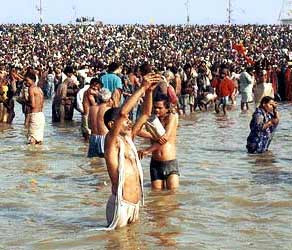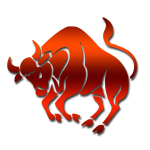Paid Services
Maha Kumbh Mela 2010 : Legend behind it
Author: Pratik Pandey | Last Updated: Thu 21 Jan 2010 3:51:56 PM

Kumbh Mela is the biggest religious fair all over the world. The first Maha Kumbh of the decade is taking place this year. It starts on Makar sankranti day on 14th of January and would come to end on the full moon day of Vaisakh on 28th of April. Shahi Snan of the 6 sects would take place on 15th and 30th of March as well as 14th April.
'Kumbh' is a word of Sanskrit literature meaning 'Pitcher'. The Kumbh Mela is held by rotation, on the banks of the River Godavari in Nasik, River Shipra in Ujjain, River Ganga in Haridwar and the confluence of the three rivers, namely, Ganga, Yamuna and the mythical Saraswati at Allahabad or Prayag (ancient name) in India. The Purna Kumbh or Maha Kumbh, the biggest and the most auspicious fair, falls once every 12 years in one particular place and every fourth year on all the four places by rotation. In fact, it depends upon the position of the Sun, moon and Jupiter in the planet.
In Hindu mythology, the Kumbh Mela traces its origin to the Samudra Manthana - the churning of the primordial ocean - described in the Bhagavata Purana, Vishnu Purana, the Mahabharata and the Ramayana.
According to the Puranas, when the Gods were defeated by the demons, they approached Lord Vishnu, the preserver of the universe, to seek the boon of immortality. Vishnu told them that the secrets of life and death are hidden in the ocean of milk. But to churn the ocean, they needed help from demons as well. They struck a deal with the demons according to which the treasure was to be divided alternately.
Gradually the ocean started yielding the holy cow and the flying horse; the lyre and the siren, Lakshmi and Vishwakarma and many more items. Finally, Dhanvantari, the divine physician, came out holding the Kumbh or pitcher of Amrit or the nectar of life that could bestow immortality. A huge fight took place between the demons and the gods because it was the turn of the demons to take the gift. But the gods did not want them to have nectar, as that would make them immortal. Thus Dhanvantari decided to elude himself from the demons and fled to the heavens with the pitcher. On his journey lasting twelve days, he hid at four different places, namely, Prayag, Nasik, Ujjain and Haridwar, where the drops of nectar also fell. Therefore, these places are considered holy by the Hindus and have become important pilgrim spots.
The most important ritual of the Kumbh Mela in India is the ceremonial dip in the water. The Hindus believe that a bath in the holy waters on the auspicious day will cleanse them and their ancestors back to the eighty-eighth generation off all evil and sin. This would ensure their salvation or moksha from the cycle of life, death and rebirth. Ritual bathing is done in the open and ideally on the banks of a river or stream with complete submergence of the body under water and an oblation to the sun. The most auspicious day for the ritual bath at Kumbh is on the day of the new moon.
 Best quality gemstones with assurance of AstroCAMP.com More
Best quality gemstones with assurance of AstroCAMP.com More
 Take advantage of Yantra with assurance of AstroCAMP.com More
Take advantage of Yantra with assurance of AstroCAMP.com More
 Yantra to pacify planets and have a happy life .. get from AstroCAMP.com More
Yantra to pacify planets and have a happy life .. get from AstroCAMP.com More
 Best quality Rudraksh with assurance of AstroCAMP.com More
Best quality Rudraksh with assurance of AstroCAMP.com More
Get your personalised horoscope based on your sign.



















